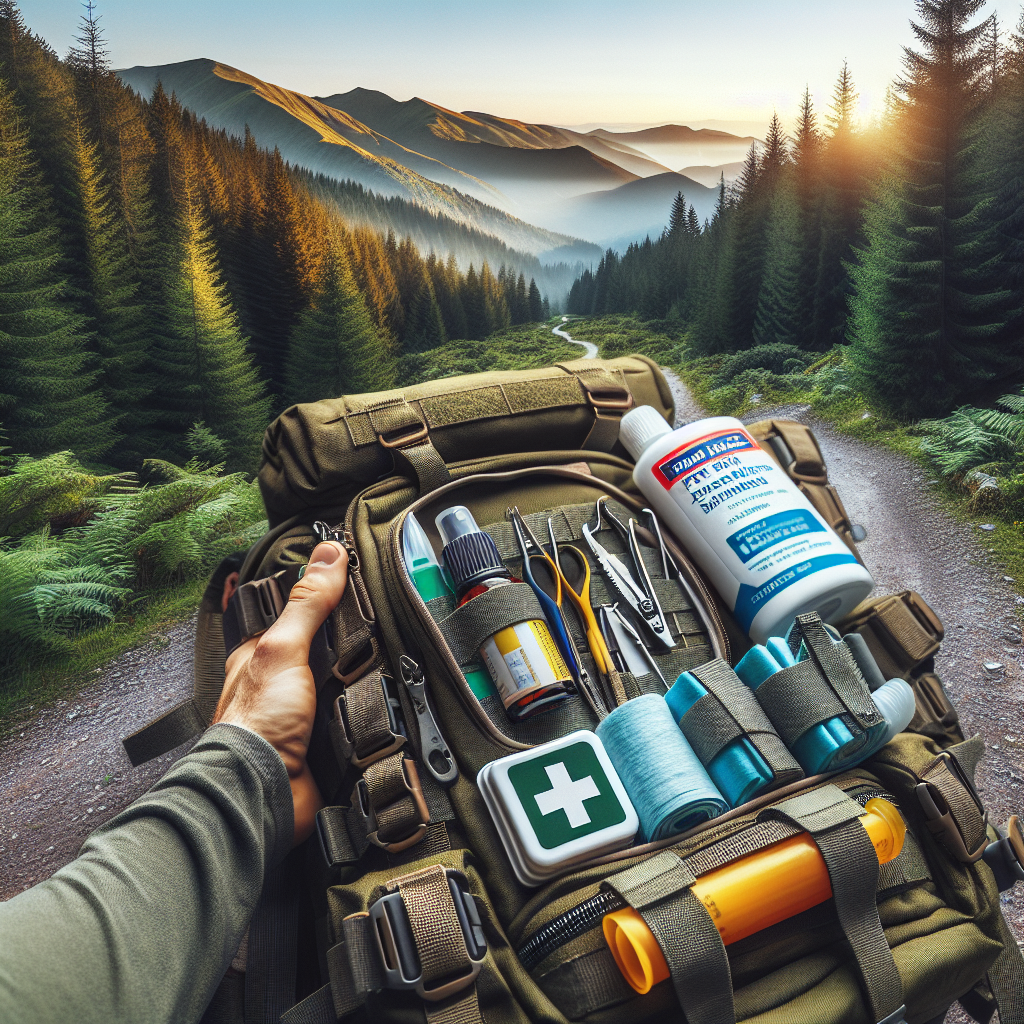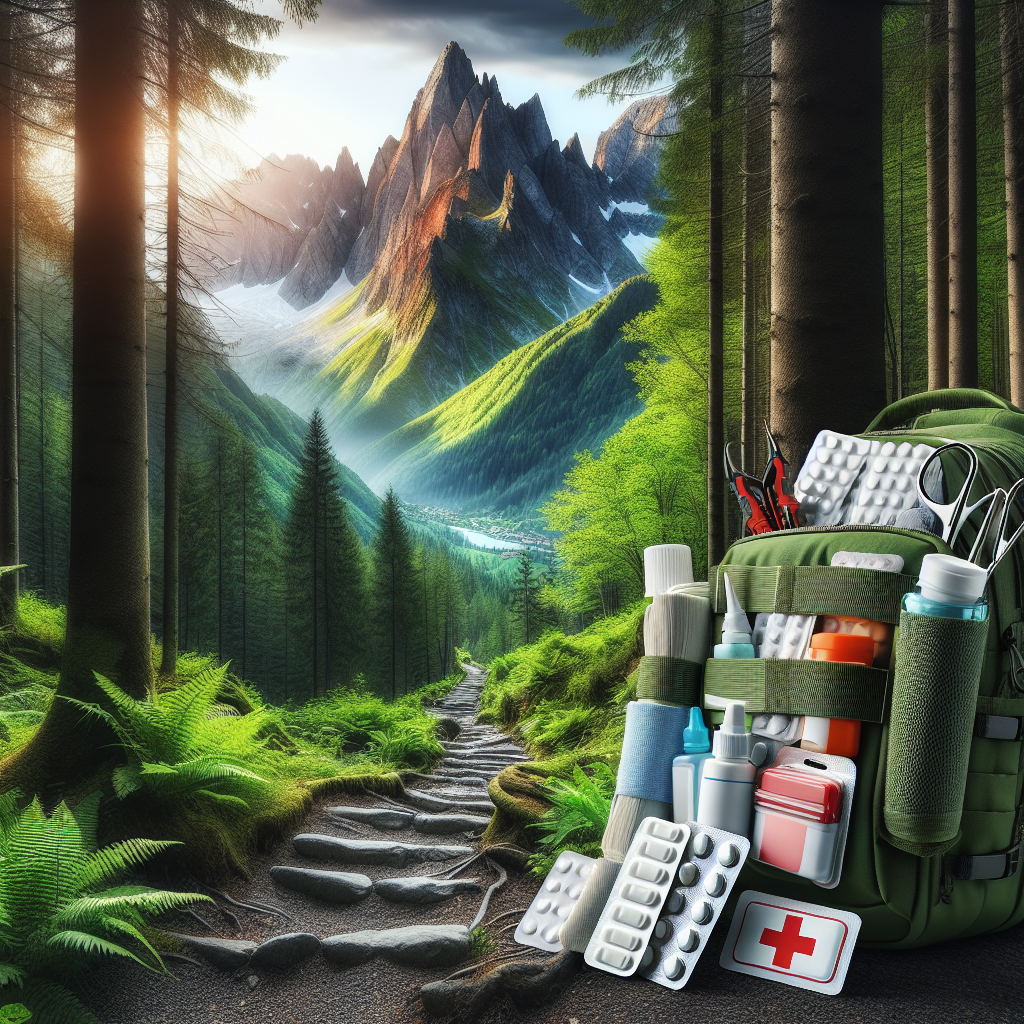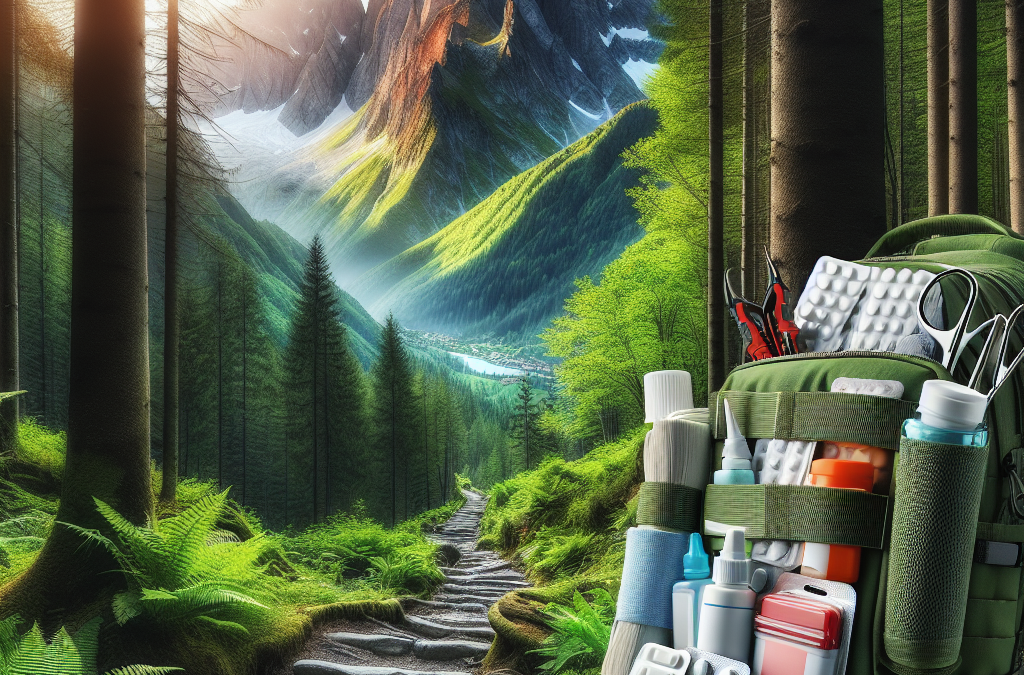Embarking on a wilderness adventure? Be prepared! “Hiking first aid: Dealing with Injuries on the Trail” is just the guide you need to stay safe on your trail escapades. This comprehensive guide will gift you with essential knowledge on how to tackle a variety of injuries in the great outdoors. From sprains and fractures to flash floods, this article ensures you’re well-equipped for any hurdles that nature may toss your way. So, before strapping on your hiking boots, let’s steer you toward packing the right knowledge just as much as the right gear.

Importance of Hiking First Aid
Hiking first aid is something you never wish to use, but absolutely need to have. When you’re out in the open, surrounded by the beauty of nature, the last thing on your mind is an accident. But accidents can and do happen, and often when we least expect them. Thus, understanding the role of first aid in hiking is significant. Not only does it equip you with the potential to self-heal, it also provides you with the knowledge to possibly save someone else’s life.
Understanding the role of first aid in hiking
First aid is your first line of defense when an accident or injury happens, especially in remote trails. The smallest scrape can turn into a large problem if left untreated or not treated properly. That’s why knowing basic first aid procedures can make all the difference.
Potential dangers on hiking trails
There are numerous potential dangers on hiking trails; from weather changes, wild animals and insects, to rough terrain and unexpected falls. Accurately identifying risks and taking preventative measures can significantly reduce the likelihood of injury or harm.
Preparation for Hiking
Hiking is not just about lacing up your boots and hitting the trails, careful preparation is a must to ensure a safe and enjoyable hike.
Importance of physical conditioning
Good physical condition can be a lifesaver on the trail. It can not only help you avoid injuries but also make hiking more enjoyable. Regular cardio exercise, strength training, balance exercises and flexibility can significantly improve your hiking experience.
Research on trail conditions and potential hazards
Knowing what to expect can be half the battle. Research the trail conditions before embarking on your journey. Look up possible hazards, wildlife sightings, and recent hiking experiences of others on that trail.
Understanding weather forecasts and their implications
Weather can change rapidly when hiking, always check the forecast before you leave. Knowledge of weather implications can be essential in hiking, it can dictate your gear, route and can even be a deciding factor to go or not.
Essential First Aid Skills for Hikers
knowing basic first aid skills can prove to be a lifesaver. Here are some essential skills every hiker should know:
Performing CPR
Knowing how to perform CPR (cardiopulmonary resuscitation) can literally be the difference between life and death. It’s a critical skill that can keep someone alive until help arrives.
How to deal with fractures and sprains
In the rough terrain of the trail, fractures and sprains are common. Knowing how to treat a fracture or a sprain can reduce pain and prevent further injury.
Managing heatstroke and hypothermia
Extreme temperatures can lead to dangerous conditions such as heatstroke and hypothermia. Understanding the signs of these conditions and knowing how to react can save lives.
Steps to treat cuts and abrasions
Cuts and abrasions are common injuries on the trail. Knowing how to properly clean and dress a wound can prevent infection and speed up healing.
First Aid Kit for Hikers
A well-stocked first aid kit is a must for any hiker. Here are a few points to consider when assembling your kit.
Items to include in your hiking first aid kit
Your hiking first aid kit should include items to handle common injuries like cuts, burns, insect bites and blisters. Also include tools to help handle larger medical events such as a splint for fractures and dressings for larger wounds.
Factors to consider in size and weight of the kit
The size and weight of your kit should be proportional to the length and nature of your hike. Longer hikes or hikes in more challenging terrain may require additional items.
Regular check and replenishment of supplies
Regularly check and restock your kit as necessary. Check expiration dates on medications and replace items that have been used or have expired.

Dealing with Common Hiking Injuries
Common hiking injuries such as blisters, sprains, strains and insect bites can turn a fantastic hike into misery if not treated properly.
Recognizing and treating blisters
Blisters are painful and can ruin a hike if not treated properly. Know how to recognize, treat and prevent blisters to keep your hike blister-free.
Addressing ticks bites and prevention
Tick bites can be dangerous and even deadly if not treated promptly. Learn how to properly remove a tick and prevent tick bites in the first place.
Managing sprains and strains
Sprains and strains are common injuries on the trail. Knowing how to properly treat these injuries can help you get back on the trail quicker.
First aid for snake bites
Snake bites can be terrifying, but knowing the correct first aid steps can help keep you calm and potentially save your life.
Coping With Serious Hiking Injuries
Serious hiking injuries such as fractures, concussions or severe bleeding need immediate attention.
Handling major fractures
Knowing how to stabilize and immobilize a major fracture can reduce pain and prevent further injury.
What to do in case of a concussion
A concussion is a serious injury that needs immediate attention. Knowing the signs of a concussion and what to do can be crucial.
Treatment for severe bleeding
Severe bleeding is life-threatening. Knowing how to stop the bleeding and dress the wound properly can save a life.
Dealing with a suspected spinal injury
Any injury to the spine is extremely serious. Knowing how to correctly move and transport someone with a suspected spinal injury can make a huge difference.
First Aid for Illnesses on The Trail
Health issues can crop up on the trail, whether it’s dehydration, altitude sickness or stomach issues, knowing how to manage can make your hike more enjoyable.
Treating dehydration
Dehydration is a common issue when hiking. Recognizing the signs and knowing how to treat it can prevent it from developing into a serious problem.
Managing altitude sickness
Altitude sickness can be dangerous if not treated. Knowing the signs and how to treat it is crucial when hiking at high altitudes.
Coping with stomach issues
Stomach issues can not only make your hike uncomfortable but can also lead to dehydration. Know how to treat common stomach issues to keep you on the trail.
Identifying signs of heat illnesses and appropriate actions
Heatstroke and other heat-related illnesses can be life-threatening if not treated promptly. Recognize the signs and take appropriate actions to prevent heat illnesses on the trail.
First Aid Implementation to Others
Knowing how to provide first aid to others is just as crucial as providing first aid to yourself.
Checking for responsiveness
Before you start giving first aid, make sure the person is responsive. Talk to them, ask them questions, and check for signs of awareness.
Conducting a primary and secondary survey
A systematic approach can help you identify and prioritize injuries. Conduct a primary survey to check for life-threatening conditions, then a secondary survey for minor injuries.
Importance of communication and reassurances while providing aid
Reassuring the injured person and communicating what you are doing can help them stay calm, which is crucial for successful first aid.
Knowing when to call for professional medical help
Sometimes, even the best first aid skills are not enough. Know when to call for professional medical help, and have a clear plan for doing so.
Hiking Hygiene and its Role in Preventing Injuries
Keeping clean on the trail can go a long way in preventing injuries and illnesses.
Importance of cleanliness and sanitation
Regular washing of hands and keeping your camping area clean can prevent illnesses and infections.
Proper waste disposal practices
Proper waste disposal prevents contamination of water sources and campgrounds, which can lead to diseases.
Necessity of clean drinking water
Drinking contaminated water can lead to several diseases. Know how to provide clean drinking water at camp.
Preventing food contamination
Proper food handling and storage can prevent foodborne illnesses, keeping you healthy on the trail.
Wilderness Survival and First Aid
In the wilderness, survival and first aid go hand in hand.
Survival skills that complement first aid
Survival skills such as fire building, shelter construction, and navigation can directly impact your well-being and the seriousness of any injuries you sustain.
Building a shelter and importance of maintaining body temperature
Building a shelter protects you from the elements and can prevent hypothermia or heatstroke. Maintaining your body temperature at a safe level is crucial for survival.
Finding water and food in wilderness scenarios
Knowing how to locate water and food in the wild can keep you healthy and provide the energy needed to handle any injuries.
Navigating without tools and signal for help
In a dire situation where you are lost or injured, knowing how to navigate without tools and signal for help can dramatically increase your chances of rescue and survival.

